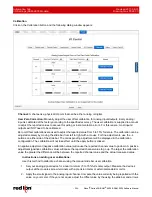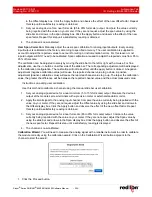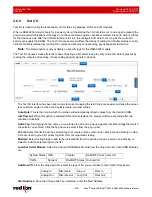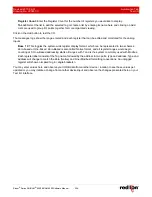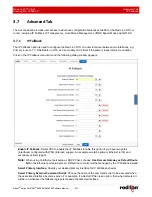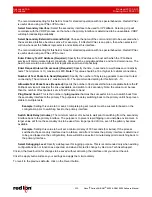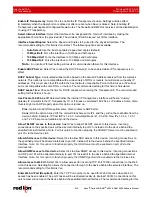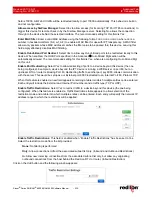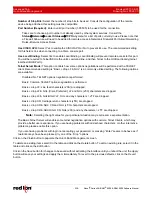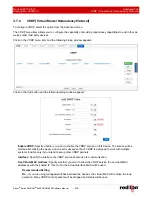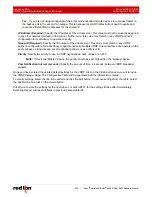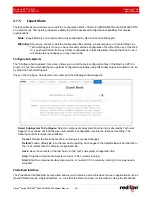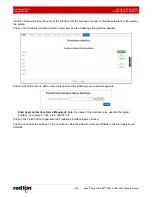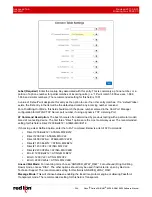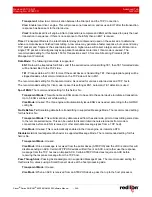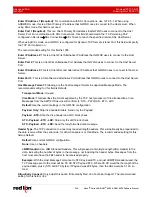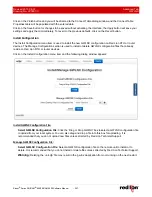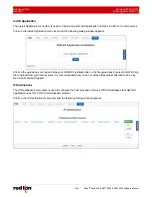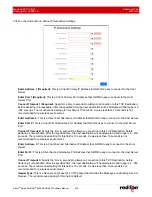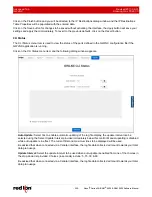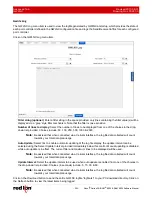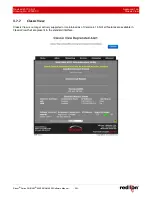
Advanced Tab
Revised 2017-08-31
Out-of-Band Management
Drawing No. LP0997-C
- 238 -
Sixnet
®
Series SN/RAM
®
6000 & RAM 9000 Software Manual
Number of Stop Bits:
Select the number of stop bits to be used. Consult the configuration of the remote
device being attached, this setting must be compatible.
Port Number (Required):
Enter a valid port number (1-65535) to be used for the connection.
Take care to choose a port number not already used by other system services. Consult the
Status
Network
Socket Statuses
TCP Only
menu for a list of ports currently in use. Please note that
a Firewall Allow rule will need to be added for remote access in Network
Firewall
Port Allow/Forwarding
Rules
Service Access Rules.
Use CISCO APH:
Select
Yes
to enable the CISCO APH or
No
to prevent it’s use. The recommended setting
for this field is Yes when connecting to a Cisco console port.
Use Local Binding:
Select
Yes
to enable Local Binding. Local Binding will prevent remote access to this port.
You will be required to Telnet/SSH to the unit’s command line, and then Telnet to the OOB port locally (telnet
localhost<OOB Port>).
Telnet Server Mode:
This option controls how some options negotiations will be performed with a TELNET
client. Recommended setting is “Basic + drop LF & NUL” is a commonly utilized setting. The following options
are available:
Disabled:
No TELNET options negotiation is performed.
Basic:
Common TELNET options negotiation is performed.
Basic + drop LF:
Line feed characters (x'0A) are dropped.
Basic + drop LF & NUL (Cisco Preferred): LF and NUL (x'00) characters are dropped.
Basic + drop LF & NUL/HIGH:
LF, NUL and any characters > x'7F are dropped.
Basic + drop CR:
Carriage return characters (x'0D) are dropped.
Basic + drop CR & NUL: CR and NUL (x'00) characters are dropped.
Basic + drop CR & NUL/HIGH:
CR, NUL (x’00) and any characters > x'7F are dropped.
Note:
Selecting the right value for your particular situation may require some experimentation.
The Basic Telnet Server will enable some telnet negotiation options with common Telnet Clients, which may
provide a better user experience. If you are having problems with odd echoed characters, or other interactive
problems, please enable this option.
If you are having problems with login not accepting your password, or pressing “Enter” seems to behave as if
two Enter keys have been pressed, try one of the “Drop” options.
Click on the
Finish
button to populate the Out-of-Band Management screen.
To delete an existing item, select it in the table and click on the
Delete
button. To edit an existing rule, select it in the
table and click on the
Edit
button.
Click on the
Save
button for changes to be saved without activating the interface until you reboot the unit, the
Apply
button will save your settings and apply them immediately. To revert to the previous defaults, click on the
Revert
button.

